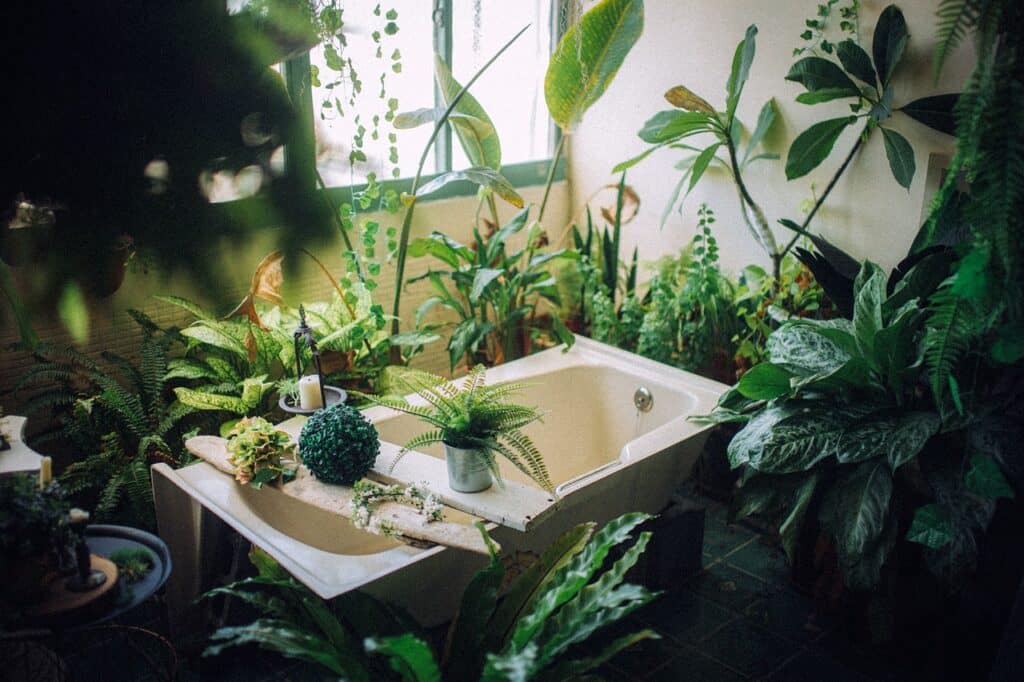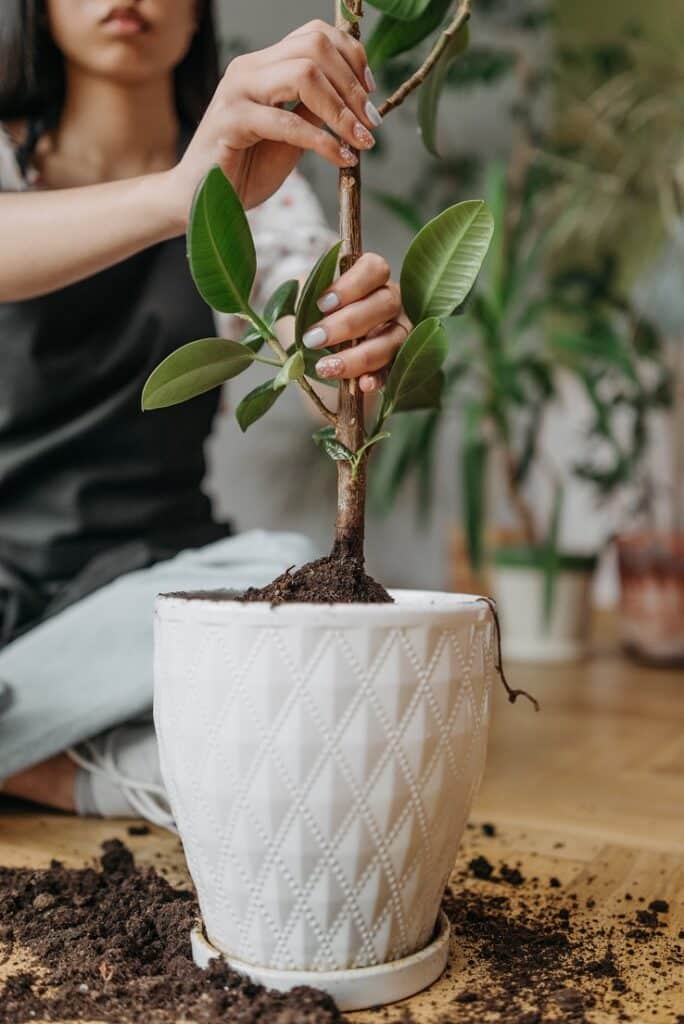So, you’ve found yourself with a dying calathea plant, and you’re determined to bring it back to life. Don’t worry, you’re in the right place! In this article, we will explore effective strategies to revive your struggling calathea plant and help it thrive once again. Whether it’s drooping leaves, brown spots, or a lack of growth, we’ve got you covered with tips and tricks that will infuse new life into your beloved foliage. Take a deep breath, grab your gardening gloves, and let’s embark on this journey together to save your dying calathea plant!

Understanding the Calathea Plant
The Calathea plant, known for its vibrant and eye-catching foliage, is a popular choice among plant enthusiasts. Native to the tropical regions of Central and South America, this plant is cherished for its unique and intricate leaf patterns, which can come in a variety of colors and shapes. From the striped leaves of the Calathea ornata to the intricate patterns of the Calathea roseopicta, each variety of Calathea offers a unique and captivating display.
Signs of a Dying Calathea Plant
Despite its beauty, the Calathea plant can sometimes struggle and display signs of distress. It is important to be attentive to these signs in order to take appropriate action and revive your plant. Here are some common signs to look out for:
Wilting Leaves
When a Calathea plant is not receiving adequate care, its leaves may start to wilt. This can be a result of underwatering or overwatering, both of which can lead to stress and damage to the plant’s root system.
Yellowing Leaves
Yellowing leaves are often a sign of an underlying issue with the Calathea plant. This discoloration can be caused by overexposure to direct sunlight, nutrient deficiencies, or even pests.
Brown and Crispy Leaves
If the leaves of your Calathea plant start turning brown and becoming crisp, it could be a result of inconsistent watering. Overwatering or underwatering can cause the roots to become damaged, leading to this unsightly browning.
Leaf Curling
Leaf curling is another common sign of a struggling Calathea plant. This often occurs when the plant is exposed to extremely cold or hot temperatures, or if it is in an environment with low humidity levels.
Faded Leaf Colors
A dull and faded appearance of the Calathea’s once vibrant foliage can indicate a variety of issues, including insufficient lighting, improper watering, or nutrient deficiencies.

Factors Contributing to a Dying Calathea Plant
Understanding the factors that can contribute to a dying Calathea plant is crucial in order to provide the necessary care and revive it to its full health. Here are some common factors to consider:
Incorrect Watering
Watering is a critical aspect of Calathea plant care. Overwatering or underwatering can both lead to stress and damage. It is important to strike a balance and ensure that the soil is evenly moist, without letting it become waterlogged.
Inadequate Lighting
Calathea plants thrive in indirect or filtered light conditions. Insufficient lighting can cause the leaves to lose their vibrant colors and can even lead to stunted growth. On the other hand, exposure to direct sunlight can result in burned or scorched leaves.
Inappropriate Temperature
Calathea plants prefer warm and humid environments. Extreme temperatures, whether it be too hot or too cold, can cause significant distress to the plant. It is important to provide a consistent and moderate temperature for the Calathea to thrive.
Exposure to Drafts
Drafty areas can greatly affect the overall health of a Calathea plant. Cold drafts can cause temperature fluctuations, while hot drafts can result in dehydration. It is best to keep the plant away from windows or doors that may expose it to drafts.
Improper Humidity Levels
Calathea plants are native to tropical regions and thrive in high humidity environments. Dry air can lead to leaf curling, browning, and other signs of distress. Providing adequate humidity through methods such as misting or using a humidifier can greatly benefit the plant.
Poor Drainage
Calathea plants require well-draining soil to prevent waterlogged roots. Poor drainage can lead to root rot and other issues. Ensuring that the pot has drainage holes and using a well-draining potting mix is essential for the plant’s health.
Nutrient Deficiency
A lack of essential nutrients can cause the Calathea plant to struggle. Nitrogen, phosphorus, and potassium are key elements for healthy growth. Regularly fertilizing the plant with a balanced houseplant fertilizer can help prevent nutrient deficiencies.
Reviving a Dying Calathea Plant: Step-by-Step Guide
If you notice that your Calathea plant is showing signs of distress, it is important to take action promptly to revive it. Here is a step-by-step guide to help you in the revival process:
Identification and Correction of Watering Issues
Evaluate the moisture level of the soil and adjust your watering routine accordingly. Ensure that the pot has drainage holes to prevent waterlogging. If you have been overwatering, allow the soil to dry out before watering again. If you have been underwatering, water the plant thoroughly until water drains out of the bottom of the pot.
Proper Lighting and Temperature Management
Place your Calathea plant in a location with indirect or filtered light. Avoid exposing it to direct sunlight, which can cause leaf burn. Also, ensure that the plant is kept at a moderate temperature, away from extreme heat or cold.
Creating Ideal Humidity Levels
Increase the humidity around your Calathea plant by misting it regularly or placing it on a tray filled with pebbles and water. Another option is to use a humidifier to maintain a consistent level of humidity.
Improving Drainage
Check the drainage system of your pot and ensure that excess water can flow out easily. If necessary, consider repotting your Calathea into a container with proper drainage holes and fresh, well-draining potting mix.
Providing Nutrient Support
Feeding your Calathea plant with a balanced houseplant fertilizer can help provide the essential nutrients it needs to recover. Follow the instructions on the fertilizer packaging for the appropriate dosage and frequency.

Recovering a Severely Affected Calathea Plant
In some cases, a Calathea plant may be severely affected and require additional measures to aid in its recovery. Here are some steps to consider:
Trimming Dead or Damaged Leaves
Trim any dead or severely damaged leaves to promote new growth and prevent the plant from wasting energy on those parts. Use clean and sharp pruning shears to make clean cuts.
Isolating the Plant
If you suspect pests or diseases as the cause of distress, isolate the affected Calathea plant to prevent any potential spread to other plants. Monitor the isolated plant closely and take appropriate measures to treat the specific issue.
Treating Pests and Diseases
If your Calathea plant is infested with pests, such as spider mites or mealybugs, use appropriate organic or chemical methods to eliminate them. If diseases, such as fungal infections, are present, treat with suitable fungicides according to the recommended instructions.
Consider Repotting the Plant
If your Calathea plant is not recovering despite your efforts, it might benefit from being repotted. Choose a slightly larger pot with proper drainage and fresh potting mix to provide a fresh start for the plant.
Preventive Measures for a Healthy Calathea Plant
To maintain a healthy and thriving Calathea plant, it is important to implement preventive measures. Here are some key steps to follow:
Consistent Watering Routine
Establish a watering schedule that allows the soil to partially dry out between waterings. Avoid overwatering or underwatering.
Ideal Lighting and Temperature Conditions
Place your Calathea plant in a location with bright indirect light and maintain a temperature range of 65°F to 75°F (18°C to 24°C). Avoid exposing the plant to extreme temperatures or direct sunlight.
Maintaining Adequate Humidity Levels
Calathea plants thrive in humidity levels of around 50% to 60%. Create a humid environment by misting the plant or using a humidifier. Grouping plants together can also help increase humidity.
Using Well-Draining Soil
When planting or repotting your Calathea, use a well-draining potting mix that allows excess water to flow freely through the soil. This prevents waterlogged roots and promotes healthy growth.
Regular Inspections for Pests and Diseases
Regularly inspect your Calathea plants for any signs of pests or diseases. Early detection can prevent these issues from escalating and causing significant damage.
Proper Fertilization
Feed your Calathea plant with a balanced houseplant fertilizer during the growing season. Follow the instructions on the fertilizer packaging for the appropriate dosage and frequency.
Conclusion
With their captivating foliage and unique leaf patterns, Calathea plants are a delightful addition to any indoor space. By understanding the signs of a dying Calathea plant and addressing the contributing factors, you can successfully revive and maintain the health of your Calathea. Remember to provide the correct amount of water, adequate lighting, suitable temperatures, and proper humidity levels to ensure the longevity and vibrancy of your Calathea plant. With care and attention, your Calathea plant will thrive and continue to brighten up your living space.




